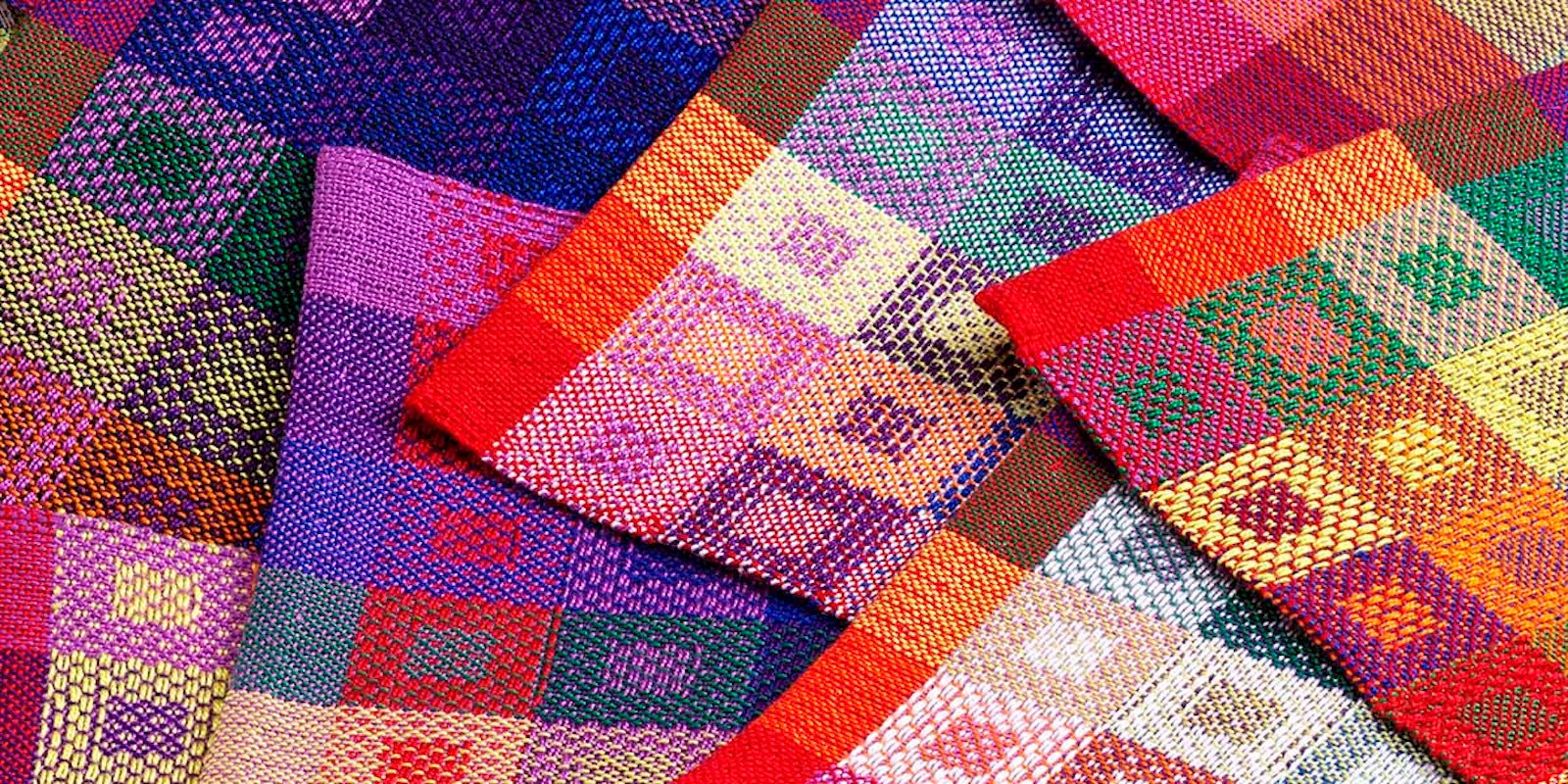My introduction to floor loom weaving was a week with Madelyn van der Hoogt at The Weaver’s School, which was a bit like drinking from a fire hose. We learned a lot of structures that week, and while I loved all of them, I would have been hard-pressed to explain them until I got home and went back over my samples and drafts. One that did stick in my head was summer and winter.
Summer and winter is a tied unit weave—tied meaning that there are warp ends whose job it is to tie down pattern floats, and unit meaning that each thread group (“unit”) can interlace independently of the units around it, producing either pattern or background.
 Vicki Tardy‘s linen runners in summer and winter use one threading with three tie-ups.
Vicki Tardy‘s linen runners in summer and winter use one threading with three tie-ups.
I quickly grasped the advantages of a tied weave: I could make a pattern area as wide as I desired, because the tie-down threads prevent long floats. I liked that the cloth was reversible—hence the name: If you use contrasting colors for pattern and ground weft, there is a predominantly light (“summer”) side and a predominantly dark (“winter”) side.
I was also enchanted with the fact that the tie-down weft in summer and winter can be used in several different ways, producing a pattern within the pattern: tiny x’s, o’s, squares, or what’s called a dukagång treadling, which produces subtle stripes. I’m one of those weavers who loves to design, warp, and weave the first 6 inches of a project. Then I'm ready to move on unless I can experiment with pattern at the loom, so the play possibilites of summer and winter made it one of my first loves.
But Wait, There‘s More!
As with any good relationship, after the rush of infatuation I continued to discover new things to love about summer and winter. Because I‘d learned to weave on eight-shaft looms, at first I didn’t truly understand the power of a weave structure that needs only one shaft per pattern block. But eventually I got it: With 8 shafts, you can weave 6 blocks! Oh, the possibilities for weaving traditional patterns—or for making up your own designs!
 Left: You‘d never guess that Tracy Kastner‘s picnic cloth uses just four colors: yellow, pink, turquoise, and white. Right: Kate Lange-McKibben designed four sets of runners using seasonal colors for each.
Left: You‘d never guess that Tracy Kastner‘s picnic cloth uses just four colors: yellow, pink, turquoise, and white. Right: Kate Lange-McKibben designed four sets of runners using seasonal colors for each.
The other thing I didn’t immediately realize about summer and winter is how well it lends itself to color play. My first samples used a black ground warp and weft and a brightly colored pattern weft, which was lovely, I have since learned from years of projects in Handwoven that this weave structure has its own love affair with color. You can vary the colors of the warp, the pattern weft, and the background weft to produce subtle interactions—and visual blending can create more colors than exist in the threads themselves. And you can use a summer and winter threading with multiple pattern wefts to weave what’s called summer and winter polychrome (or taqueté), with fabulous results.
I eventually returned to the scene of my first “date” with summer and winter, The Weaver’s School, to produce a video about the structure alongside Madelyn van der Hoogt. Click here to watch it, and learn about the wonders of summer and winter for yourself.
Not only does the course give a thorough introduction to designing and weaving this many-splendored structure, it also includes a copy of the Best of Handwoven eBook with eleven projects you can use to create lovely textiles for your home and to wear. Though the eBook comes with the video course, if you‘d like to take a look at it on its own, click here.
I predict that once you try summer and winter you, too, will be on your way to a new romance.
—Anita
Originally posted on Dec. 16, 2015. Updated Feb. 22, 2017, and Oct. 29, 2024

